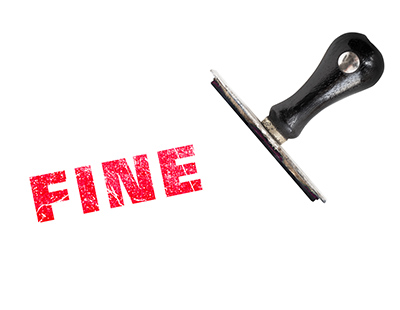
The Real Estate sector has seen the number of workers furloughed hit 28%, with the monthly wage packet for these workers hitting £460.35m per month, which is the second-lowest of all industries, according to research by property recruitment specialist, Rayner Personnel.
The Water Supply Sewerage Waste Management And Remediation Activities industry is the only sector to come in lower.
Across all UK industries, 30% of the nation’s workforce is on furlough. That is almost 11 million people at a cost of £26.7bn per month.
The hardest-hit has been the Accommodation and Food Service Activities industry. The industry has the highest number of workers on furlough at 80%, more than two million workers, with a gross monthly furlough wage bill of over £5bn.
In terms of the sheer percentage of the workforce on furlough, the Arts, Entertainment and Recreation industry has also seen a huge number of employees furloughed (78%).
This then drops considerably to the next highest, with 37% of Construction industry workers on furlough. The Transport and Storage industry (35%) and the Administrative and Support Service Activities industry (34%) have also seen a high percentage of the total workforce furloughed.
However, in terms of the total monthly cost of the furloughed workforce, the Wholesale and Retail: Repair of Motor Vehicles and Motorcycles is the industry with the second-highest gross wage bill. The sector is currently paying out £2.9bn a month in furloughed wages, with the Administrative and Support Service Activities industry, Construction and the Arts Entertainment and Recreation sectors also seeing a monthly furlough cost exceeding £2bn a month.
Josh Rayner, CEO of Rayner Personnel, said: “The ongoing restrictions of the current pandemic are understandably causing some sectors to rely on the government’s furlough scheme more than others. While the varying size of each industry means the wage bills are dramatically different from sector to sector, it does provide insight as to which areas of employment currently offer the best chance of a new job and greater job security.
This is something that should change from month to month as we see a degree of normality return and there have already been promising signs for many with the reopening of the property market, in particular.
We should hopefully see other sectors begin to follow suit in the coming months and the number of furloughed workers reduce as a result. However, for the time being, it remains a negative but important factor for those looking for a new role, in addition to the traditional draws such as salary and location.”
|
Industry
|
Percentage of workforce of furlough
|
Total number of workforce on furlough
|
Monthly cost at furlough limit - gross £2,500
|
|
Accommodation And Food Service Activities
|
80%
|
2,035,728
|
£5,089,320,000
|
|
Wholesale And Retail Trade; Repair Of Motor Vehicles And Motorcycles
|
24%
|
1,177,653
|
£2,944,132,500
|
|
Administrative And Support Service Activities
|
34%
|
1,019,424
|
£2,548,560,000
|
|
Construction
|
37%
|
833,295
|
£2,083,237,500
|
|
Arts Entertainment And Recreation
|
78%
|
802,370
|
£2,005,925,000
|
|
Manufacturing
|
26%
|
709,496
|
£1,773,740,000
|
|
Transportation And Storage
|
35%
|
630,784
|
£1,576,960,000
|
|
Professional Scientific And Technical Activities
|
15%
|
486,328
|
£1,215,820,000
|
|
Human Health And Social Work Activities
|
8%
|
376,320
|
£940,800,000
|
|
Education
|
11%
|
323,948
|
£809,870,000
|
|
Information And Communication
|
13%
|
207,879
|
£519,697,500
|
|
Real Estate Activities
|
28%
|
184,140
|
£460,350,000
|
|
Water Supply Sewerage Waste Management And Remediation Activities
|
11%
|
26,442
|
£66,105,000
|
|
|
|
|
|
|
All Industries
|
30%
|
10,677,936
|
£26,694,840,000
|
|
Data on the percentage of furloughed employees and the number of employees per industry from the Office for National Statistics.
|
Want to comment on this story? Our focus is on providing a platform for you to share your insights and views and we welcome contributions.
If any post is considered to victimise, harass, degrade or intimidate an individual or group of individuals, then the post may be deleted and the individual immediately banned from posting in future.
Please help us by reporting comments you consider to be unduly offensive so we can review and take action if necessary. Thank you.















.jpg)









%20(002).png)




.png)






Join the conversation
Jump to latest comment and add your reply
The text says '£460,000 per month', but the grid says '£460,350,000' per month.
A typo of vast proportion!
Or am I missing something?
Both say £460.35 million.
It has been changed to be fair to Bill, I noticed it yesterday.
Numbers seem high from everything I have read. Most commentators put monthly cost in at about £15bn per month, and OBR estimates total cost by the end of October all in all will be £54bn.
Does it matter how much!?
Different sectors will obviously have differing requirements.
The point is though that the economy is in an emergency situation.
If normal life cannot function when ordinarily it would Govt needs to do whatever it takes to sustain the economy which would be and was doing fine before the Govt response to CV19.
Such Govt actions were surely appropriate in light of what has been a national emergency.
Such actions should really be continued for as long as necessary.
It is not the fault of workers etc that CV19 has stopped them working.
So whatever it costs is just something that Govt has to pay.
It is a fact that the costs of QE and CV19 will be repaid over the next 100 years
It will like wartime debt just become part of the now hugely increased National Debt.
Fortunately the UK is considered to be a safe country to store wealth.
Which is why Govt has no problem in selling debt to those wishing to invest in it.
Indeed so secure is the UK considered that for the first time in history the UK sold negative interest bearing bonds to investors.
A crazy world where those with money are now paying Govt to effectively lend money to it!!
But hey the UK Govt is not going to decline such investment funds.
The UK stability as a country that has NEVER defaulted on its debts gives confidence to those with money who are effectively keeping the UK afloat with their resources.
Please login to comment